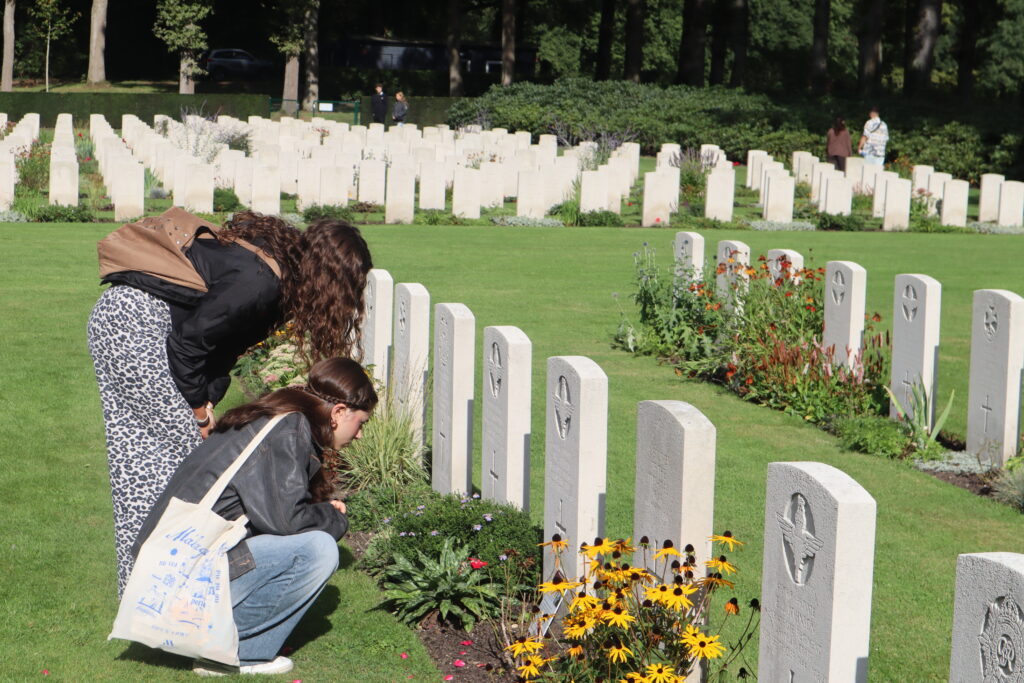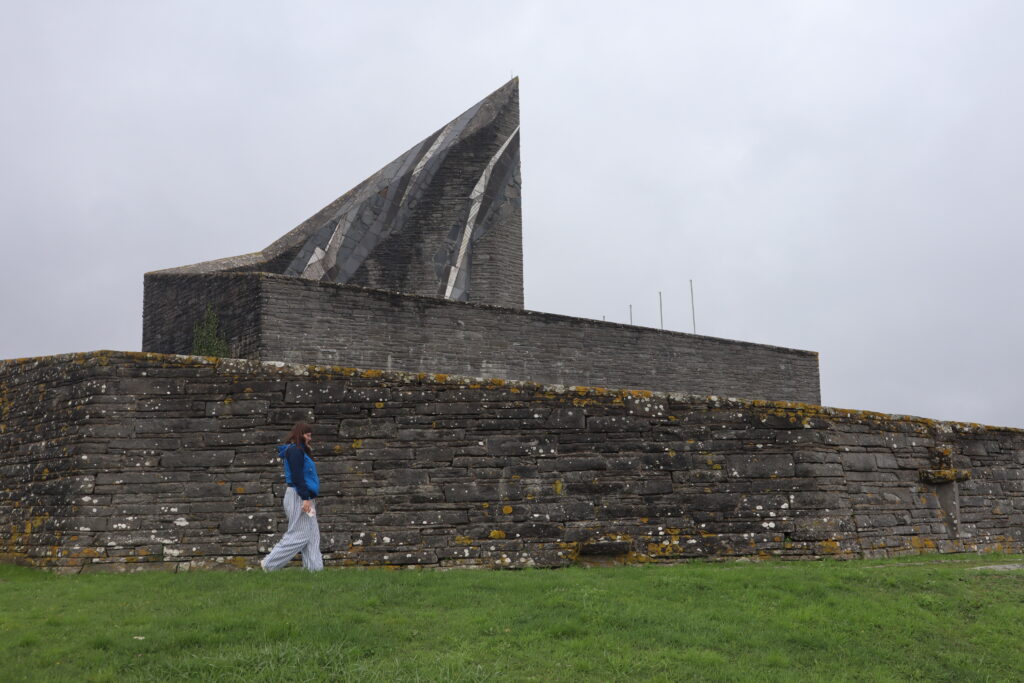During September, other three successful youth exchanges were carried out in the framework of the Active Remembrance Youth Program, involving young history enthusiasts from all over Europe. Participants had the chance to connect with stories, places and monuments of the Second World War in countries ranging from the Netherlands, Belgium and France to Italy. Here are some highlights of the trips.
The Operation Market Garden exchange
The first exchange, held in the Netherlands and Belgium in the second week of September, revolved around the theme of Operation Market Garden, which took place from 17 to 25 September 1944. Participants explored the Liberation Garden Museum’s immersive exhibits, including trench installations, and visited the Commonwealth War Cemeteries in Leopoldsburg, Belgium. The next day, they toured the Nationaal Monument Kamp Vught in the Netherlands from a tour guide and local resident. The site served as the only SS concentration camp outside Nazi Germany during Second World War. The Freedom Museum Groesbeek revealed lesser-known perspectives of the war, offering an exhibition on Indigenous liberators from the US and Canada.





Over the following days, participants visited the Airborne War Cemetery in Arnhem, where 1,754 British soldiers are buried. Continuing their adventure, they explored the Airborne Museum Oosterbeek, housed in the old Villa Hartenstein, which served as the headquarters of the British 1st Airborne Division during the war. After delving into the Airborne Experience, an immersive display of airborne soldiers’ journeys during Operation Market Garden, participants ended their journey at the final location of the operation, where soldiers were evacuated after the Battle of Arnhem. There, they had the chance to hike on a part of LRE’s Perimeter Route.
Northen France and Belgium Liberation
The second exchange in the fourth week of September traced the route of the Allied Forces in Northern France and Belgium. The programme started in La Coupole, a former Nazi bunker and base for launching V2 rockets, which today serves as a historical and scientific museum in Nord-Pas-de-Calais, France. The centre provides visitors with innovative tools, such as Histopads, to discover the site’s history of forced labour, nuclear weapons and war machinery.
Moving on to Dunkirk, participants explored the Operation Dynamo Museum, gaining insights into soldiers’ and civilians’ experiences during this pivotal evacuation. A guided tour along the beach highlighted the operation’s role in rescuing over 338,000 Allied soldiers from the beaches and harbour of Dunkirk between 26 May and 4 June 1940. The group then visited the Mons Memorial Museum in Belgium, to learn about the city’s strategic importance in past wars. The programme concluded at the House of European History in Brussels, where participants drew inspiration by participatory youth projects reflecting on contemporary European identity.



Resistance and diverse war experiences in Italy
The last youth exchange, themed ‘Resistance and diverse war experiences in Italy’, took place in the last week of September and focused on stories and places of the Italian campaign, conducted by the Allies from 1943 until the liberation of Northern Italy in 1945. Participants from ten different European countries met at the EcoMuseo Office in Rome, to learn about the city’s wartime history, followed by a visit to the Historical Museum of Liberation. The next day, they visited the Ardeatine Caves Mausoleum, a memorial commemorating the massacre on 23 and 24 March 1944 and had the chance to hear a moving testimony from a victim’s daughter. The stay in Rome concluded with a guided tour of key sites linked to the Fascist regime and the Second World War.
Next, participants travelled to the German cemetery of Futa Pass in Firenzuola, Tuscany. Standing on what used to be the German and Italian defensive ‘Gothic Line’, the cemetery houses the graves of over 30,000 German soldiers who fell in Northern Italy. The group also spent a day at the Monte Sole Historical Park, a site that witnessed the biggest civilian massacre by the Nazis in the country, perpetrated from 29 September to 5 October 1944. The programme ended with the participation to a ‘Floor Vectors of Memory’ installation on this site.






